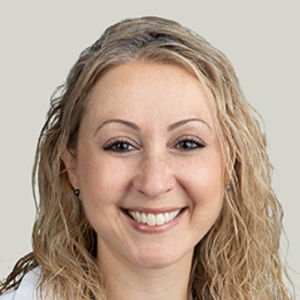
Olga Pasternak-Wise, MD, MS
Assistant Professor of Radiology
Welcome, and thank you for your interest in the Diagnostic Radiology Residency at the University of Chicago Medical Center. The Department of Radiology’s teaching programs are strongly influenced by the mission of the University of Chicago: to pursue academic excellence in all fields of study. The Department has a rich history of contributions to the field of radiology, and we hope that you will consider adding to our legacy.
Our basic 4-year residency training program consists of a subspecialty track system with 4-week-long rotations in the following sections:
- Abdominal computed tomography
- Breast imaging
- Cardiovascular imaging
- Gastrointestinal and genitourinary radiology
- Magnetic resonance imaging
- Musculoskeletal imaging
- Neuroangiography
- Neuroradiology
- Nuclear medicine
- Pediatric imaging
- Sonography (General and OB/GYN)
- Thoracic imaging
- Vascular and interventional radiology
Each subspecialty is staffed by dedicated faculty members who have either fellowship training or many years of experience in their field. Residents are also offered the opportunity to attend the Radiological Pathology Course at the American Institute of Radiologic Pathology in Washington DC and are given 4 months of elective time which may be used for additional clinical rotations and/or research. The training program is well-balanced and offers a broad variety of career pathways that include the practice of general radiology and its subspecialties. Furthermore, the University of Chicago’s academic affiliation with NorthShore University HealthSystem allows our residents to complement their training with additional experience at one of the nation’s leading community-based teaching hospitals.
Educational facilities include a newly designed study room with six computer workstations. Daily conferences take place in our recently remodeled resident conference room, with projection capability allowing cases to be viewed directly from our PACS or from other electronic media. Teaching conferences consist of daily noontime conferences, weekly seminars, and approximately 25 clinical conferences conducted by faculty each week. Grand Rounds and Research Conferences are scheduled on a regular basis. A required radiological physics and radiation biology course with practicum is held two hours per week in the first year. Residents also attend a Review Course in Radiation Physics held in August and the University of Chicago Radiology Review Course in the spring. Residents are provided with a shared office & lounge, adjacent locker room and on-call room with access to the PACS system when on call.
Although our primary goal is to train outstanding clinical radiologists, as a world-class academic institution, teaching and research are fundamental components of our program; we are particularly proud of the large number of trainees who choose to continue their careers in academic medicine. All trainees are encouraged to participate in research activities, and dedicated time and funding is provided to motivated residents for this purpose. Publication and presentation at national meetings is also encouraged. A broad range of research activity is underway in the department; a sampling of some of our internationally recognized research sections can be obtained by clicking here.
The clinical department is equipped with state-of-the-art imaging systems, including seven computed tomography units (16, 64 and 256 slice), and seven magnetic resonance imaging units (1.5 and 3.0 Tesla). There are seven interventional suites including two biplane fluoroscopy units for neurointerventional procedures as well a dedicated interventional radiology clinic and nursing unit with advanced monitoring capabilities. Our nuclear medicine section boasts a PET/CT unit as well as a state-of-the-art gantry-less SPECT system among its equipment. The department uses a highly sophisticated PACS for image interpretation, and reports are produced instantaneously via a voice recognition system. Dedicated imaging research facilities include 3T and 1.5T MRI systems for human imaging as well as 9.4T MRI, microPET/SPECT/CT, ultrasound and 3 optical imaging systems for animal imaging.
The Diagnostic Radiology Residency program was surveyed by the ACGME in April 2010 and received full continued accreditation for five years in November 2010. The program received continued accreditation for an additional five year in February 2015 and again in February 2020 for another 5 years.
